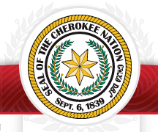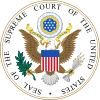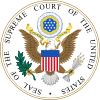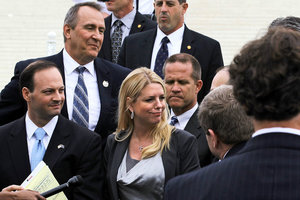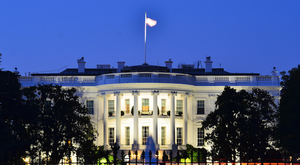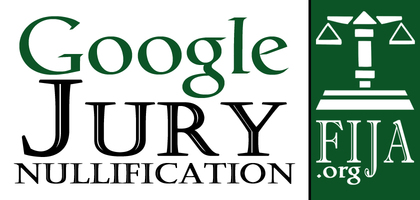U.S. Indian Law & Treaties
Article I, Section 8, Clause 3
Constitution of the United States
[The Congress shall have Power] To regulate Commerce with foreign Nations, and among the several States, and with the Indian tribes;
U.S. Indian law - U.S. Code: Title 25 - INDIANS
U.S. Code: Title 25 - INDIANS
CHAPTER 1 - Bureau of Indian Affairs
CHAPTER 2 - Officers Of Indian Affairs
CHAPTER 2A - Indian Claims Commission
CHAPTER 3 - Agreements With Indians
CHAPTER 4 - Performance By United States of Indian Obligations
CHAPTER 5 - Protection of Indians
CHAPTER 6 - Government of Indian Country and Reservations
CHAPTER 7 - Education of Indians
CHAPTER 7A - Promotion of Social, Economic Welfare
CHAPTER 8 - Rights-Of-Way Through Indian Lands
CHAPTER 9 - Allotment of Indian Lands
CHAPTER 10 - Descent & Distribution; Heirs of Allottee
CHAPTER 11 - Irrigation of Allotted Lands
CHAPTER 12 - Lease, Sale, or Surrender of Allotted or Unallotted
Lands
CHAPTER 13 - Ceded Indian Lands
CHAPTER 14 - Miscellaneous
CHAPTER 15 - Constitutional Rights of Indians
CHAPTER 16 - Distribution of Judgment Funds
CHAPTER 17 - Financing Economic Development of Indians and
Indian Organizations
CHAPTER 18 - Indian Health Care
CHAPTER 19 - Indian Land Claims Settlements
CHAPTER 20 - Tribally Controlled Colleges & Universities Assistance
CHAPTER 21 - Indian Child Welfare
CHAPTER 22 - Bureau of Indian Affairs Programs
CHAPTER 23 - Development Tribal Mineral Resources
CHAPTER 24 - Indian Land Consolidation
CHAPTER 25 - Old Age Assistance Claims Settlement
CHAPTER 26 - Indian Alcohol and Substance Abuse Prevention and
Treatment
CHAPTER 27 - Tribally Controlled School Grants
CHAPTER 28 - Indian Education Program
CHAPTER 29 - Indian Gaming Regulation
CHAPTER 30 - Indian Law Enforcement Reform
CHAPTER 31 - Native American Languages
CHAPTER 32 - Native American Graves Protection and Repatriation
CHAPTER 32A - Cultural and Heritage Cooperation Authority
CHAPTER 33 - National Indian Forest Resources Management
CHAPTER 34 - Indian Child Protection & Family Violence Prevention
CHAPTER 35 - Indian Higher Education Programs
CHAPTER 36 - Indian Employment, Training and Related Services
CHAPTER 37 - Indian Energy
CHAPTER 38 - Indian Tribal Justice Support
CHAPTER 38A - Indian Tribal Justice Technical and Legal Assistance
CHAPTER 39 - American Indian Agricultural Resource Management
CHAPTER 40 - Indian Dams Safety
CHAPTER 41 - Indian Lands Open Dump Cleanup
CHAPTER 42 - American Indian Trust Fund Management Reform
CHAPTER 43 - Native American Housing Assistance and
Self-Determination
CHAPTER 44 - Native American Business Development, Trade
Promotion, and Tourism
U.S. Indian Law - Policy
Outline of United States federal Indian law and policy
Outline of United States federal Indian law and policy Wikipedia
The following outline is provided as an overview of and topical guide to United States federal Indian law and policy:
Federal Indian policy – establishes the relationship between the United States Government and the Indian Tribes within its borders. The Constitution gives the federal government primary responsibility for dealing with tribes. Law and U.S. public policy related to Native Americans have evolved continuously since the founding of the United States. David R. Wrone argues that the failure of the treaty system was because of the inability of an individualistic, democratic society to recognize group rights or the value of an organic, corporatist culture represented by the tribes.[1] Read more
Tribal sovereignty in the United States
Tribal sovereignty in the United States
Wikipedia
See also: Native American self-determination, List of Alaska Native tribal entities, and List of federally recognized tribes
Tribal sovereignty in the United States is the inherent authority of indigenous tribes to govern themselves within the borders of the United States of America. The U.S. federal government recognizes tribal nations as "domestic dependent nations" and has established a number of laws attempting to clarify the relationship between the federal, state, and tribal governments. The reference to Indians in the Constitution is not to grant local sovereignty. The only references are:
- Article 1, Section 2, which states, "Representatives and direct taxes shall be apportioned among the several states which may be included within this union, according to their respective numbers, which shall be determined by adding to the whole number of free persons, including those bound to service for a term of years, and excluding Indians not taxed, three fifths of all other Persons." This reference is for determining the number of representatives and taxes for a state. This does not allow for the exclusion of Indians from taxes and later federal laws grant local sovereignty to tribal nations, but do not grant full sovereignty equivalent to that of foreign nations, hence the term "domestic dependent nations".
- Article 1, Section 8, which states, "[The Congress shall have Power...] To regulate Commerce with foreign Nations, and among the several States, and with the Indian Tribes;"
It may be noted that while Native American tribal sovereignty is partially limited as "domestic dependent nations," so too is the sovereignty of the federal government and the individual states – each of which is limited by the other. The will of the people underlies the sovereignty of both the U.S. federal government and the states, but neither sovereignty is absolute and each operates within a system of dual sovereignty. According to the reservation clause of the Tenth Amendment, the federal state possesses only those powers delegated to it by the Constitution (expressly or implicitly), while all other powers are reserved to the unitary states or to the people. For example, the individual states hold full police powers. On the other hand, the unitary states, like the Indian tribes, cannot print currency or conduct foreign affairs, or exercise other powers assigned by the Constitution to the federal state. Viewed in this light, tribal sovereignty is a form of parallel sovereignty[1] within the U.S. constitutional framework, constrained by but not subordinate to other sovereign entities.
Indian reservations in the United States
Indian reservation
Wikipedia
This article is about Native American reservations in the United States. For a similar concept in Canada, see Indian reserve. For other uses, see Indian reservation (disambiguation). Not to be confused with Reservation in India.
An Indian reservation is a legal designation for an area of land managed by a Native American tribe under the US Bureau of Indian Affairs, rather than the state governments of the United States in which they are physically located. Each of the 326[1] Indian reservations in the United States are associated with a particular Nation. Not all of the country's 567[3][4] recognized tribes have a reservation—some tribes have more than one reservation, some share reservations, while others have none. In addition, because of past land allotments, leading to some sales to non-Native Americans, some reservations are severely fragmented, with each piece of tribal, individual, and privately held land being a separate enclave. This jumble of private and public real estate creates significant administrative, political, and legal difficulties.[5]
The collective geographical area of all reservations is 56,200,000 acres (22,700,000 ha; 87,800 sq mi; 227,000 km2),[1] approximately the size of Idaho. While most reservations are small compared to US states, there are 12 Indian reservations larger than the state of Rhode Island. The largest reservation, the Navajo Nation Reservation, is similar in size to West Virginia. Reservations are unevenly distributed throughout the country; the majority are west of the Mississippi River and occupy lands that were first reserved by treaty or 'granted' from the public domain.[6]
Because tribes possess tribal sovereignty, even though it is limited, laws on tribal lands vary from the surrounding area.[7] These laws can permit legal casinos on reservations, for example, which attract tourists. The tribal council, not the local or federal government, generally has jurisdiction over reservations. Different reservations have different systems of government, which may or may not replicate the forms of government found outside the reservation. Most Native American reservations were established by the federal government; a limited number, mainly in the East, owe their origin to state recognition.[8]
The name "reservation" comes from the conception of the Native American tribes as independent sovereigns at the time the U.S. Constitution was ratified. Thus, the early peace treaties (often signed under duress) in which Native American tribes surrendered large portions of land to the U.S. also designated parcels which the tribes, as sovereigns, "reserved" to themselves, and those parcels came to be called "reservations."[9] The term remained in use even after the federal government began to forcibly relocate tribes to parcels of land to which they had no historical connection.
A majority of Native Americans and Alaska Natives live somewhere other than the reservations, often in big western cities such as Phoenix and Los Angeles.[10][11] In 2012, there were over 2.5 million Native Americans with about 1 million living on reservations.[12] Read more
Native American Policy of the Obama Administration
Native American Policy of the Obama Administration Wikipedia
The United States public policy agenda on issues affecting Native Americans under the Obama administration includes the signing of the Tribal Law and Order Act of 2010, which allowed tribal courts to extend and expand sentences handed down to them in criminal cases, strengthening tribal autonomy. Obama also supported and enforced the Executive Order 13175,[1] which requires the federal government to consult with tribal governments when deliberating over policies and programs that would affect tribal communities. Under the Obama Administration was also the launching of Michelle Obama's program Let's Move In Indian Country, which aims to improve opportunities for physical activity, to increase access to healthy food in tribal communities, and to create collaborations between private and public sectors to build programs that will end childhood obesity in Native communities.[1] Obama also supported tribal communities through certain provisions of the American Recovery and Reinvestment Act of 2009, which allocated $510 million for rehabilitation of Native American housing, and the settlement of the Keepseagle case, a lawsuit against the United States Department of Agriculture for discriminating against tribal communities by not allowing them equal access to the USDA Farm Loan Program. Most recently, Obama signed Executive Order 13592, which seeks to improve educational opportunities for American Indian and Alaska Natives.[2]
Obama has been praised by many tribal leaders, including those who claim he has done more for Native Americans than all of his predecessors combined.[3] This has not protected Obama from criticism from Native communities, however, as evidenced by the existence of groups such as Native Americans Against Obama. Read more
U.S. Indian Law - Treaties
Indian Affairs: Laws and Treaties
Compiled and Edited by Charles J. Kappler
U.S. Indian Law - Court Decisions (case law)
Cherokee Nation v. State of Georgia
www.cherokee.org/
Mr. Chief Justice Marshall delivered the opinion of the Court:
This bill is brought by the Cherokee Nation, praying an injunction to restrain the state of Georgia from the execution of certain laws of that state, which as is alleged, go directly to annihilate the Cherokees as a political society, and to seize, for the use of Georgia, the lands of the nation which have been assured to them by the United States in solemn treaties repeatedly made and still in force.
If courts were permitted to indulge their sympathies, a case better calculated to excite them can scarcely be imagined. A people once numerous, powerful, and truly independent, found by our ancestors in the quiet and uncontrolled possession of an ample domain, gradually sinking beneath our superior policy, our arts, and our arms, have yielded their lands by successive treaties, each of which contains a solemn guarantee of the residue, until they retain no more of their formerly extensive territory than is deemed necessary to their comfortable subsistence. To preserve this remnant the present application is made. Read more
Cherokee Nation v. Georgia
Wikipedia
Cherokee Nation v. Georgia, 30 U.S. (5 Peters) 1 (1831), was a United States Supreme Court case. The Cherokee Nation sought a federal injunction against laws passed by the U.S. state of Georgia depriving them of rights within its boundaries, but the Supreme Court did not hear the case on its merits. It ruled that it had no original jurisdiction in the matter, as the Cherokees were a dependent nation, with a relationship to the United States like that of a "ward to its guardian." Read more
Mescalero Apache Tribe v. Jones, 411 U.S. 145 (1973), was a case in which the Supreme Court of the United States held that a state could tax tribal, off-reservation business activities but could not impose a tax on tribal land, which was exempt from all forms of property taxes. more
New Mexico v. Mescalero Apache Tribe, 462 U.S. 324 (1983), was a case in which the Supreme Court of the United States held that the application of New Mexico's laws to on-reservation hunting and fishing by nonmembers of the Tribe is preempted by the operation of federal law.[1] Read more





